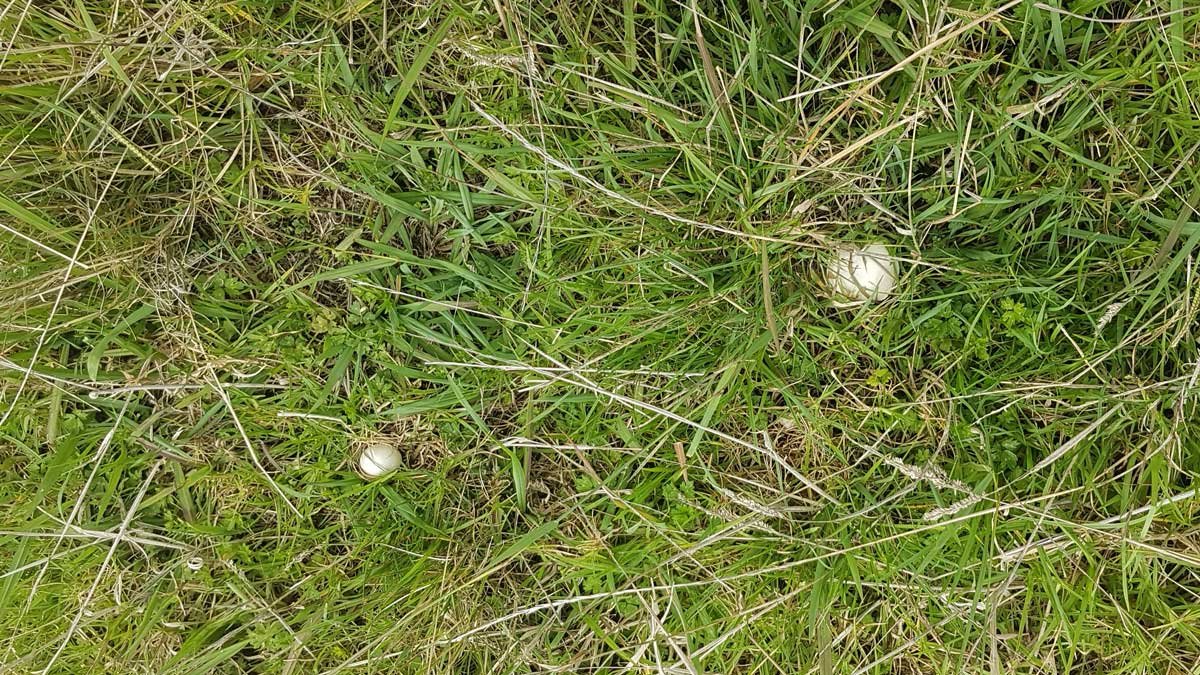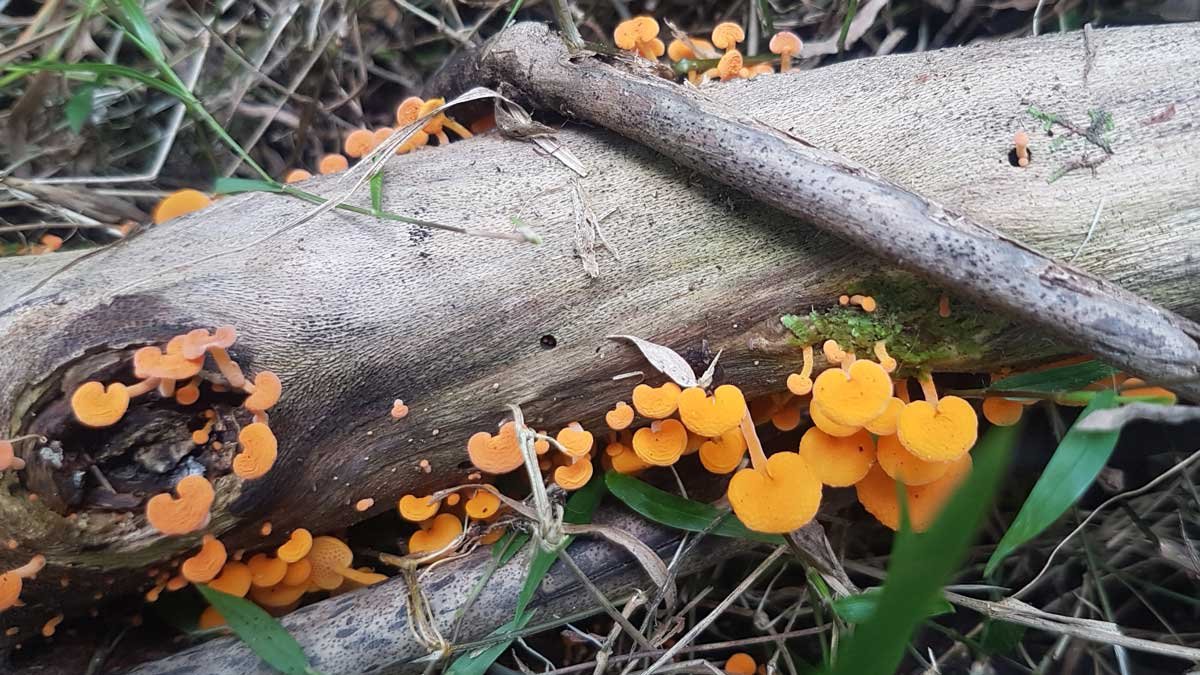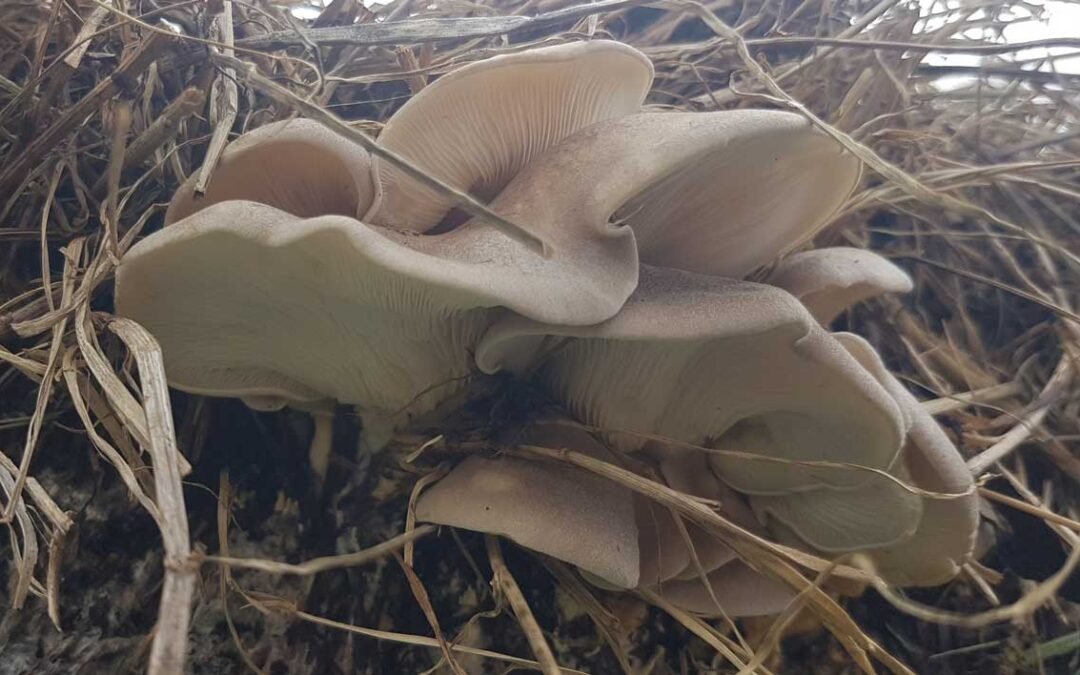We have a lot of fungi at The Outpost. After a huge dump of rain earlier this week (180mm!), many have begun to pop up.
So I took Roxy for a walk around our fields, gardens, and native bush to go find them. This week, I thought I’d take you on a bit of a fungal photo-journey.
Field mushrooms
Just before Lockdown, Richard and I found field mushrooms growing in one of our paddocks. I remember thinking ‘at least we have a supply of mushrooms’ as Level 4 loomed. Almost a year later, I was delighted to find them popping up again this week.

These mushrooms are most definitely edible. They seem to pop up in late summer/early autumn and so far, we’ve found them in a couple of spots in one paddock.
Next year, I’ll try to do a better job grazing this paddock down before February. It’s probably a little long at the moment, and the grass can hinder the ability of the fungi to bloom.
Compost mushrooms
A few weeks ago, I wrote about building a hot compost heap. Since then, I’ve watched the temperature creep up, and these ink cap mushrooms pop up each day

They’re there in the morning, but usually gone by the time the afternoon rolls around. Though some ink cap mushrooms are edible, we’ve only managed to establish that it belongs to the Coprinopsis family on iNaturalist. We’re not brave enough to have eaten them, I just admire them each morning instead.
There must be some incredible webs of fungi going on in the compost to get such a large and regular bloom.
Forest fungi
The previous owner of the property cut down a lot of Taiwan cherry trees in the bush block. What remains is a whole lot of rotting cherry wood on the forest floor. And on that cherry wood, grows a whole lot of Orange Pore Fungus (Favolaschia calocera).

I got this identified on iNaturalist. Wikipedia tells me that it’s an invasive species that has been documented in New Zealand since the 1950s. Wild. At least it’s pretty.
Oyster mushrooms
While not actually blooming now, for a while there we were getting oyster mushrooms off the ball of mulch each time it rained.

They were positively identified on Twitter by an expert, but we never did pick and eat them. It was a lot of fun to spot them and watch them grow though.
Fungi are good guys
Webs of mycelium (the ‘vegetative’ bit of fungus that lives underground, the ‘fruiting’ bit is the mushroom) can help plants to reach more nutrients for growth. Plant roots can tap into the vastly-larger mycelium webs through mycorrhizal networks. These networks enable plants to find nutrients and water that they couldn’t find by itself.
Whether a fungus is edible or not, I try to notice and celebrate fungi. Most of the time, I don’t get to see where they are, what they’re up to, or how they are helping me along. But when they pop their fruits up to say hello, it’s always delightful.
Fungi also play an important role in the degradation of vegetative matter, helping to improve soils by breaking down hay, manure, and wood. They’re a vital part of the food web. It’s not just about flouncing into a paddock to pick mushrooms for dinner (though that’s awesome) – it’s about a whole lifeform that lives mostly unseen, providing vital services that benefit us in ways we almost-never think about.


